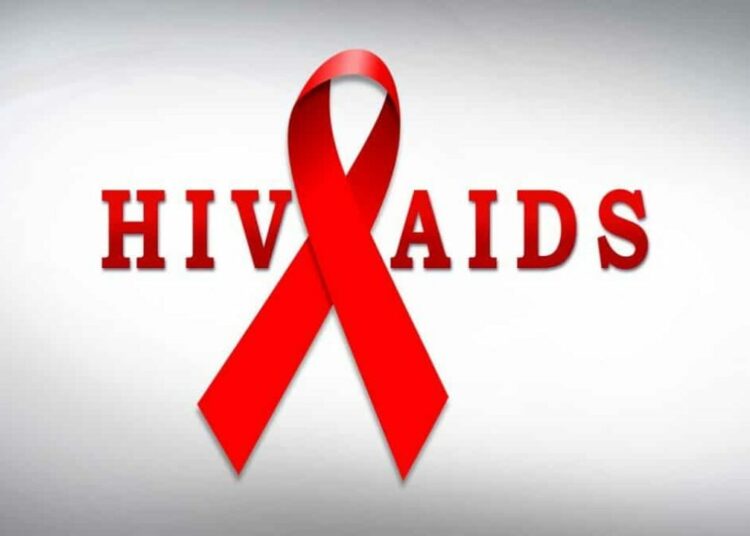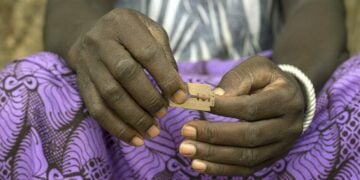When 28-year-old Funmi Ajayi (not her real name) first tested positive for HIV in 2019, her biggest fear wasn’t death, it was being seen at the clinic.
“I used to wait until closing time to collect my drugs. Sometimes, I would just skip appointments,” she recalled.
That fear almost cost her life. But in 2023, a health worker visited her home after her name appeared on a new digital tracking system, LAMIS Plus, used to monitor clients and prevent treatment interruptions.
“They told me my file showed I hadn’t collected my medicine for two months. They helped me restart, and now I collect my refill at a nearby pharmacy. I don’t have to go far or worry about being seen,” she says.
In Bayelsa’s riverine communities, a 32-year-old fisherman, Timi Preye faced his own battle.
Diagnosed with HIV in 2022, he feared rejection from his tight-knit community. “I didn’t know how to tell anyone,” he stated.
Nigeria continues to carry one of the world’s largest HIV burdens, though progress has been remarkable in recent years.
According to the National Agency for the Control of AIDS (NACA) and UNAIDS, the country’s HIV prevalence among adults aged 15–49 now stands at 1.3 percent, a major decline from previous years. This translates to about 1.8 million people living with HIV, with women and young people disproportionately affected.
That is where new initiatives like the Accelerating Control of the HIV Epidemic (ACE-6) project (a project that combined technology, human-centred care, and system-wide reform to ensure no one is left behind), comes in.
The ACE-6 project, a five-year USAID-funded initiative, is its cornerstone in Lagos, Bayelsa, and Edo, covering 37 Local Government Areas (LGAs): 11 in Lagos, 8 in Bayelsa, and 18 in Edo.
Launched in 2022, to accelerate Nigeria’s goal of ending AIDS by 2030, ACE-6 targets general populations (e.g., women and men in transit corridors), priority groups (e.g., adolescents, single mothers, trafficking survivors), and pediatric groups (e.g., children of key populations).
Led by Heartland Alliance LTD/GTE (HALG) in consortium with Pathfinder International, KNCV Nigeria, and others, the project integrates technology and human-centred care. Digital tools like LAMIS Plus streamline client records, while innovations like Plasma Separation Cards and AI-driven risk stratification enhance testing and case finding.
By 2025, HALG’s efforts contributed to 2.17 million HIV tests, 34,264 new positives initiated on ART, and a 96 percent viral suppression rate. Additional impacts include 29,698 people on Pre-Exposure Prophylaxis (PrEP) and 29,357 women screened for cervical cancer.
In Lagos, Nigeria’s commercial hub, ACE-6 operates in densely populated LGAs like Ajeromi-Ifelodun, where Ajayi received care. The project’s digitalization reduced viral load testing times from 30 days to three, improving outcomes for thousands. Community outreach and private sector partnerships ensure access in urban slums and transit corridors.
In Bayelsa, the project navigates logistical challenges of riverine areas, like Chidi’s village, using mobile clinics and community-led testing. Integration of GBV response and access-to-justice components addresses holistic needs, while partnerships with traditional leaders boost engagement in remote settings.
In Edo state, ACE-6 project supports 18 LGAs with Differential Service Delivery models, bringing care closer to communities. Enhanced sample logistics and data systems ensure timely testing, while case managers reduce client wait times.
The permanent secretary of the Lagos State Ministry of Health, Dr. Olusegun Ogboye, described ACE-6 as a catalyst for the digital transformation of health services.
According to him, the digitalization of clients’ records through LAMIS Plus significantly enhanced program data quality and improved the overall management of client information. “Beyond the numbers, it helped track viral load samples, follow up with clients, and streamline result management, directly improving patient outcomes,” he stated.
Ogboye emphasized that Lagos plans to sustain the project’s gains by integrating HIV services into the State Health Insurance Scheme and promoting domestic resource mobilization. “We are developing a blueprint to include HIV services in our insurance package. Our goal is to reduce reliance on donors and take full ownership of the HIV response,” he explained.
Lagos state’s reproductive health coordinator, Dr. Victoria Omoera, added, “The project didn’t just give us digital tools, it changed how we think about care. Now we can track patients more effectively, reduce waiting times, and ensure no one is lost to follow-up. The human impact is visible in every clinic.”
The permanent secretary, Edo state Ministry of Health, Dr. Stanley Ehinarimwiam, described how the project aligned HIV interventions with both state and national guidelines, introducing the Differentiated Service Delivery (DSD) model that brings care closer to communities.
He highlighted the project’s contribution to workforce development, saying that deploying case managers and pharmacy data entry clerks across 28 comprehensive health facilities reduced client waiting times and improved adherence.
“The project improved data quality, strengthened lab logistics, and provided decision-makers with real-time information. If these strategies are institutionalized, Nigeria will be much closer to ending AIDS by 2030,” he added.
To sustain progress, Edo’s Annual Operational Plan (AOP) now includes HIV response funding, human resource recruitment, and continuous training. “We are bridging gaps and ensuring continuity. Our focus is to make HIV services a permanent part of the state health system,” Ehinarimwiam said.
In Bayelsa, where geography often determines access, the project shifted HIV care from hospital corridors to the heart of riverine communities.
The director of public health at the Bayelsa State Ministry of Health, Dr. Jones Stow, explained that ACE-6 aligned community case finding, linkage, and retention activities with the state’s HIV strategic plan, moving care from facilities to the community.
Stow emphasized that the program also integrated gender-based violence (GBV) response and access-to-justice components into HIV programming, a bold step in addressing structural barriers to care. “We worked with traditional and youth leaders in remote areas to build trust. The results have been remarkable,” he disclosed.
Stow, however, cautioned that while the state is technically prepared to sustain HIV services, financing and logistics remain major challenges. “Predictable budgetary allocations, support for lab consumables, and incentives for trained workers must continue,” he warned.





